Today, Plogue is launching chipsynth C64, an AAX/AU/VST3/CLAP plug-in recreation of the Commodore 64/128 and its legendary 1982 SID chip (and successors). No one else could create an emulation this obsessive. After just a few minutes with it, it feels like encountering an entirely new instrument that fell straight out of a past decade. It’s likely to enchant both nostalgic C64 fans and those discovering chip music for the first time.
Launch trailer:
To celebrate, there’s also a C64 demo running on the real PAL machine (not in software) created by 4mat. (Capture details in the description.)
And here’s what went into the recreation: endless measurements of the chips, gigs and gigs of measurement data used in research (the plug-in itself is all modeled and just 30MB), and mind-boggling attention to voltages and variations:
If you want to play around with this as “just another” software synth, you absolutely can. The tool has a friendly interface, tons of support for MIDI (including MTS-ESP and Scala tuning support), and a bunch of fantastic-sounding presets. It really does hold up as a synthesizer, not just an esoteric instrument because you want to make “chiptune.” And the presets reflect that; they’re musically voiced and playable and I can easily imagine these popping up in various genres. You even get presets designed by chip musicians like Goto80, Fade Runner, Ne7, Xenos Soundworks, and 4-Mat.
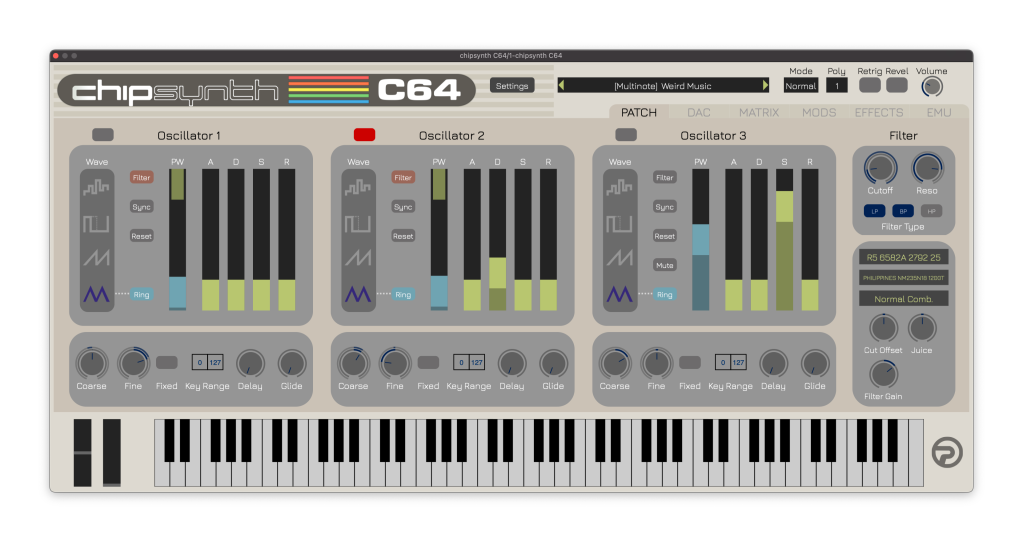
That’s true to the history of the MOS Technology SID, the chip developed by engineer Bob Yannes (who went on to found Ensoniq). By building a complete, high-quality instrument into an integrated chip, complete with features like envelope generators, precision control, ring modulation, and programmable filters, the SID easily deserves to be mentioned in the same breath as other digital synths of the 80s.
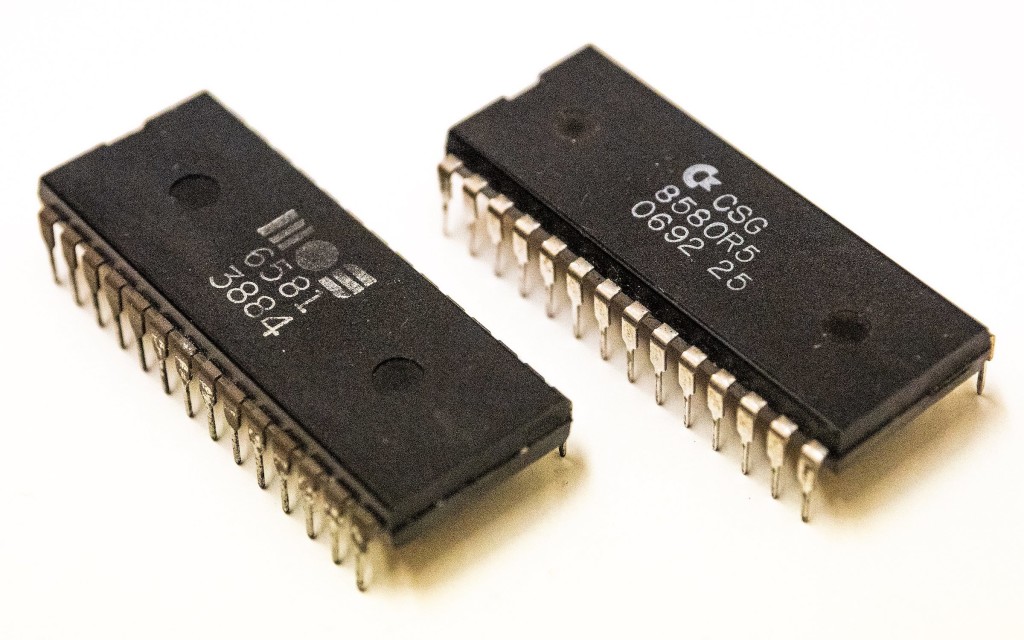
(Image: MOS Technology 6581. CC BY-SA 4.0 Taras Young.
But when we talk about minute variations, well, it’s easiest just to show you the menu. We’re not just talking about the 6581 and the later 8580 (from the 64-II and metal C128), or even that, plus a few revisions. We’re talking about every single variation you can think of. From just the chip menu:
That includes this main menu with different chips and revisions – already more exhaustive than what you’ll find on most wiki pages on the SID:
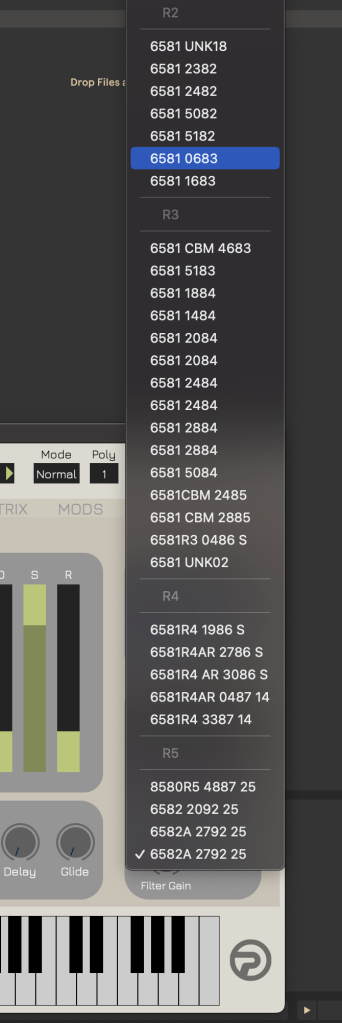
Plus, from the underside of the chips, aliases and details showing where the chips were fabbed and even on which day. David tells CDM that they have a few duplicate chips from the same fab and day “and they don’t sound the same.”
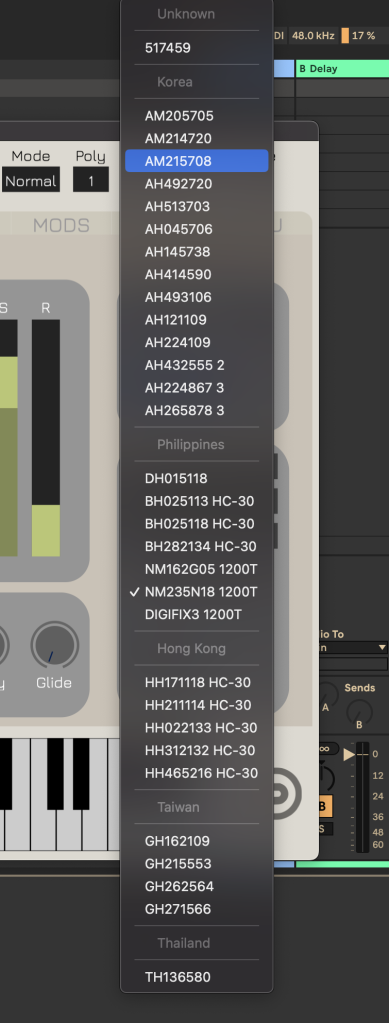
And then there are banks of new waveforms to use in place of the originals, for even more sonic variation:

Anything you can do to hack a C64 chip with code or circuits, essentially, you can do here easily with a GUI. It’s a rabbit hole to end rabbit holes.
Features:
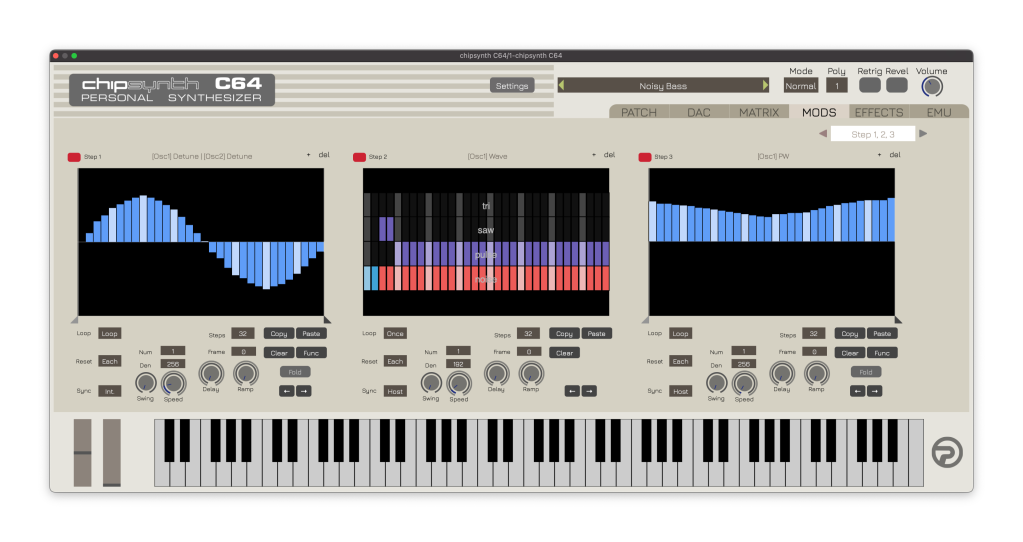
- 3 oscillators plus PCM with multiple fixed waveforms, pulse width, and noise
- MIDI, multi MIDI (separating channels), MPE (with per-note modulation and wide-range pitch bend
- Up to 12-voice polyphony
- Authentic ring mod and pulse width
- Arpeggiator
- Chorus (based on the Roland Dimension D)
- Ambience reverb (using Magnus Jonsson’s Ambience)
- Stereo delay (new repeating pattern of four delay made just for chipsynth)
- Modulation matrix with math options
- Step sequencers (including complex modulation) and host sync
- Envelope generators with graphical editing
- Emulation options: set different AV/RF jack output types, envelope bugs and filter pops and oscillator leak tweaks
- Scala, MTS-ESP settings
- Color themes (based on classic Commodore models)
You can load up any files you want as PCM and mix them as an additional sound source, which opens up its own creative possibilities and opportunity for artistic abuse. There’s even built-in slicing:

And then there’s a complete EMU tab, which will play SID files and even interface with external SID hardware, plus analyze any modulated note in SID music and turn it into a patch in the plug-in.
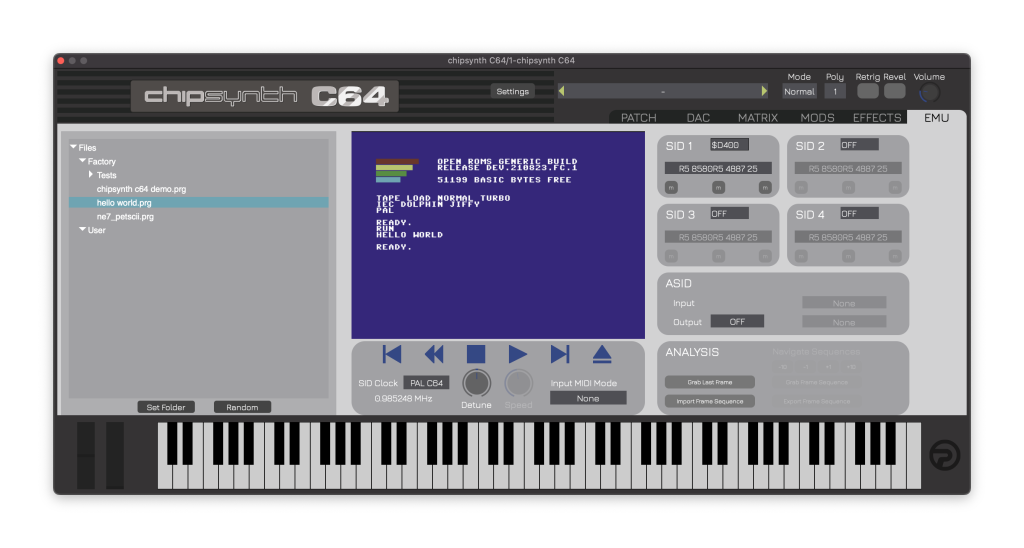
You can even load ROMs from a C64 if you own one. (For legal issues, unofficial and open-source ROMs are used in the plug-in, so – breaking copyright is bad, okay?)
Modulation matrix.
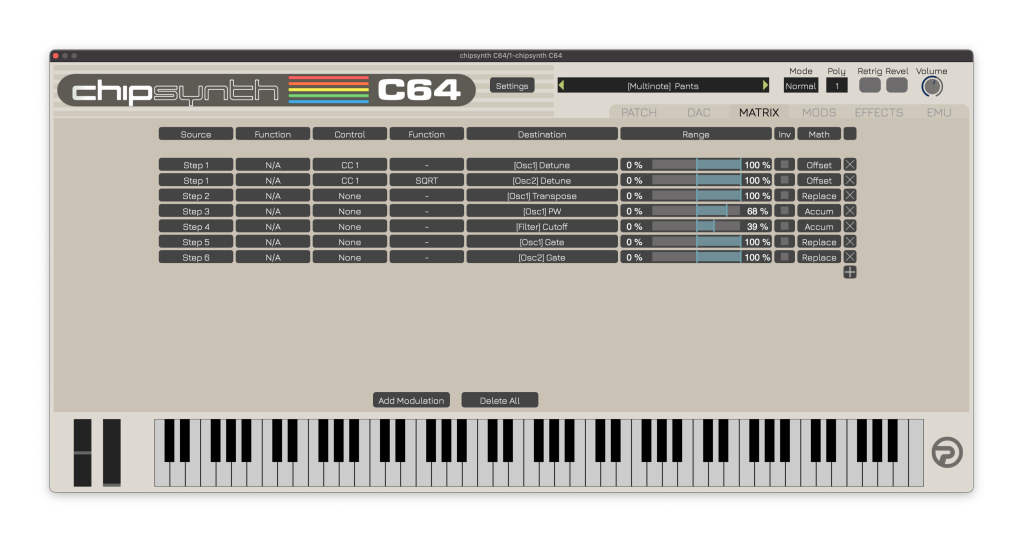
More extras: settings.
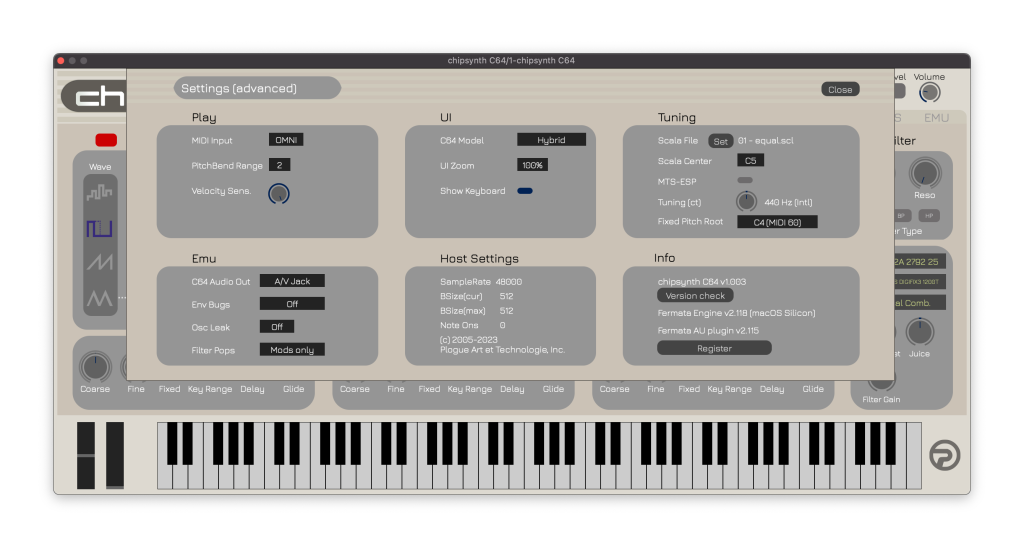
Effects:
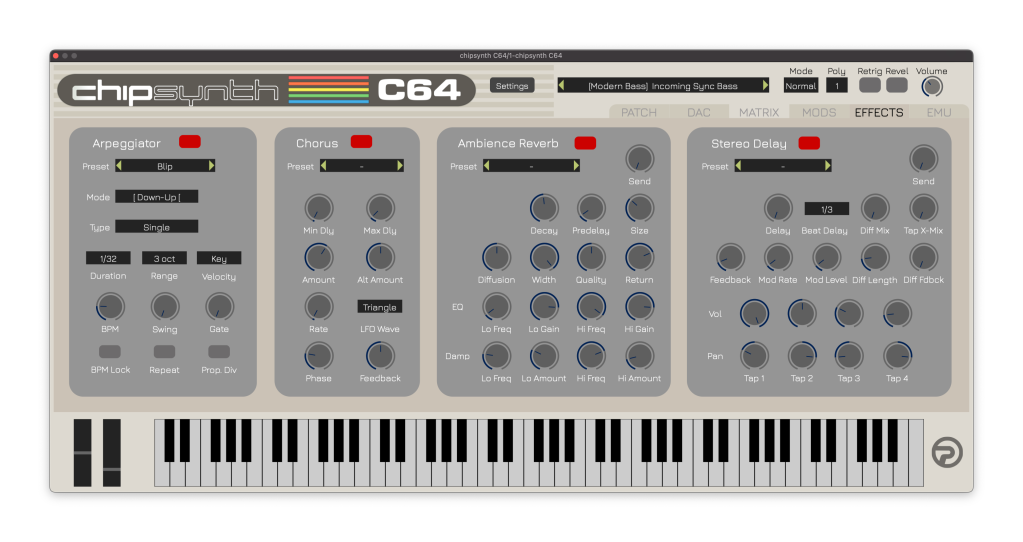
Here’s David noodling around in the EMU tab:
And listen to some beautiful demos:
It’s a huge day in chip sounds. Enjoy this one!
https://plogue.com/products/chipsynth-c64.html
Previously: